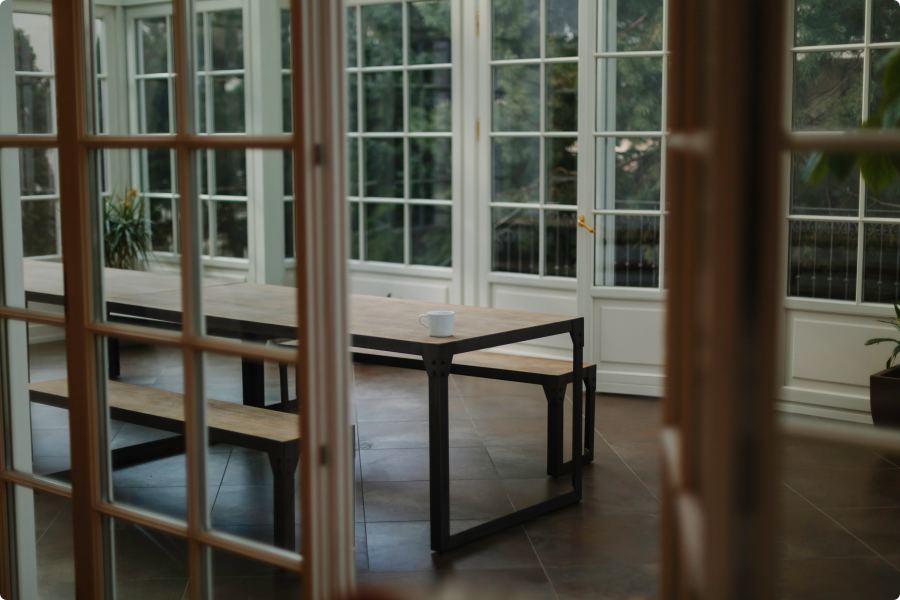So you’re considering a conservatory, but which one is going to be right for your home? In considering this question, one of the biggest things you’ll be faced with is your choice of materials. Conservatories can traditionally be constructed out of three materials…
But which one is right for your project? Here’s some things you might consider...
How big is your budget?
Naturally, one of the first things you’re going to consider is the cost of your project. No one likes to be surprised by hidden costs down the line. As extensions go, the conservatory is one of the most cost effective to build, but some do have higher price points that others.
The cheapest material to use is uPVC, and for this reason it is a very popular choice for many UK homeowners, as moulding it into the correct shape takes little craftsmanship or time. Timber can also be quite cost effective, but will require real craftsmanship to shape, so more complex structures will push those prices up. On top of this, cheap timber often doesn’t come from a sustainable source, so we encourage you to do your research beforehand.
Finally, the most costly material is aluminium, especially if you’re going for a bespoke frame. However, there are many benefits to aluminum, so the price might prove worth it in the long run.
Functionality
There are two major functions your frame will be performing: keeping the heat in and keeping intruders out.
In terms of retaining heat, both aluminium and uPVC outperform timber frames. That being said, uPVC frames are prone to having their seals degrade over time, therefore letting draughts into your home. Aluminium is made of sterner stuff, so isn’t as prone to this wear and tear. Timber can be the worst, as the wood can warp over time, if proper care isn't applied.
And when it comes the security of your home, it’s aluminium frames that take the lead again. These strong frames are nearly impossible to break into, and so would require the glass to be smashed to gain access - something most modern glazing protects against.
Style of your conservatory
There are many styles of conservatories, some modern and some more traditional. Different materials suit different styles, so it’s worth considering which structure you’re likely to favour. Classic Victorian styles can look wonderful with the modern twist of aluminium, while more simple structures can be brought to life with earthy timber. Here’s some styles you might consider…
- Victorian - recognisable by its pitched roof, this is the most popular choice in the UK.
- Edwardian - like the Victorian style, but with a flat front to give it more room.
- Georgian - their triangle fronts mean more glazing, and so more natural light in the space.
- Lean-to: a simple structure that’s easy to construct, and so good those smaller budgets.
- P-shaped: a combination of both the Victorian and lean-to style, this is perfect for open plan homes.
- T-shaped: by having a central projection, it’s easy to split this extension into two seperate rooms.
- Loggia: hailing from Italy, it features full length glazed panels - perfect to appreciate your natural surroundings.
Life expectancy
The last thing you, or future buyers, want to worry about is rebuilding your conservatory, so you want one that’s able to last as long as possible.
UPVC, as the cheapest material, has to least amount of durability. Along with its seals degrading overtime, and therefore becoming less thermally efficient, it can also warp, costing you down the line.
Wood and aluminium are a different story. If you were to do nothing to your conservatory, aluminium would last the longest without much trouble. Wood, on the other hand, is prone to rot and insect damage. However, wood does have the benefit of treatments, and can be repainted and refinished over and over again. Aluminium isn’t so easily repaired and so will have to be replaced at some point. Therefore, if you’re the kind of person who takes care of their home, you could get a much longer lifespan out of a wooden frame.
Eco-friendly
We hate to keep getting so down on uPVC, but if you’re looking for an eco-friendly material then this isn’t the one for you. It’s pretty much unrecyclable, and once used, it’ll most likely go to sit in a landfill, taking centuries to actually decompose.
Aluminium fairs much better. Once you’re done with this frame, it can be melted down and recycled into new life. Though you’ll have to make sure you arrange this, when it’s lifespan has come to an end.
Wood, though it causes the destruction of trees, is the most environmentally friendly option. That is providing you make sure you source yours from a sustainable source, of which there are many on the market. You can purchase this frame and rest easy knowing the biodegradable material won’t be causing the Earth havoc for decades to come.





















